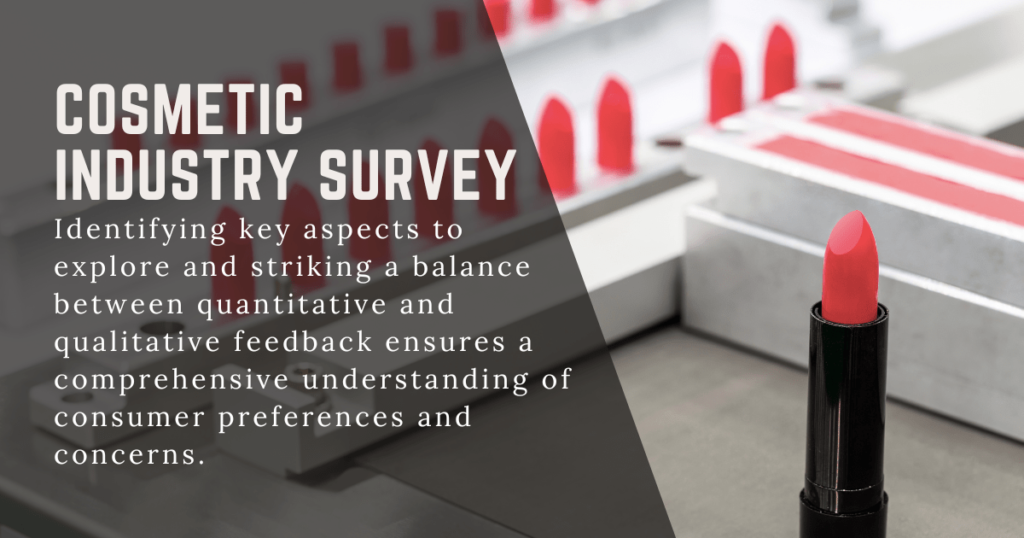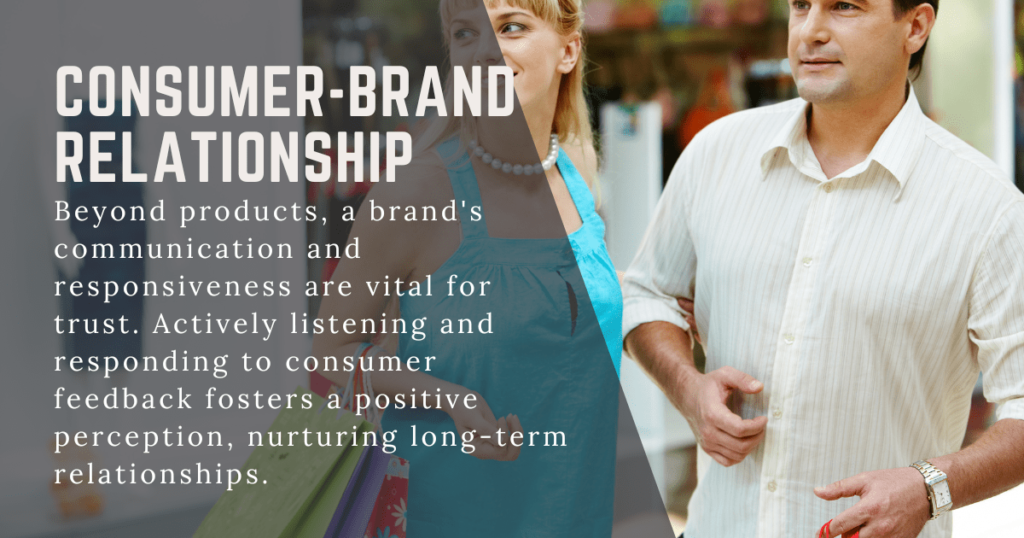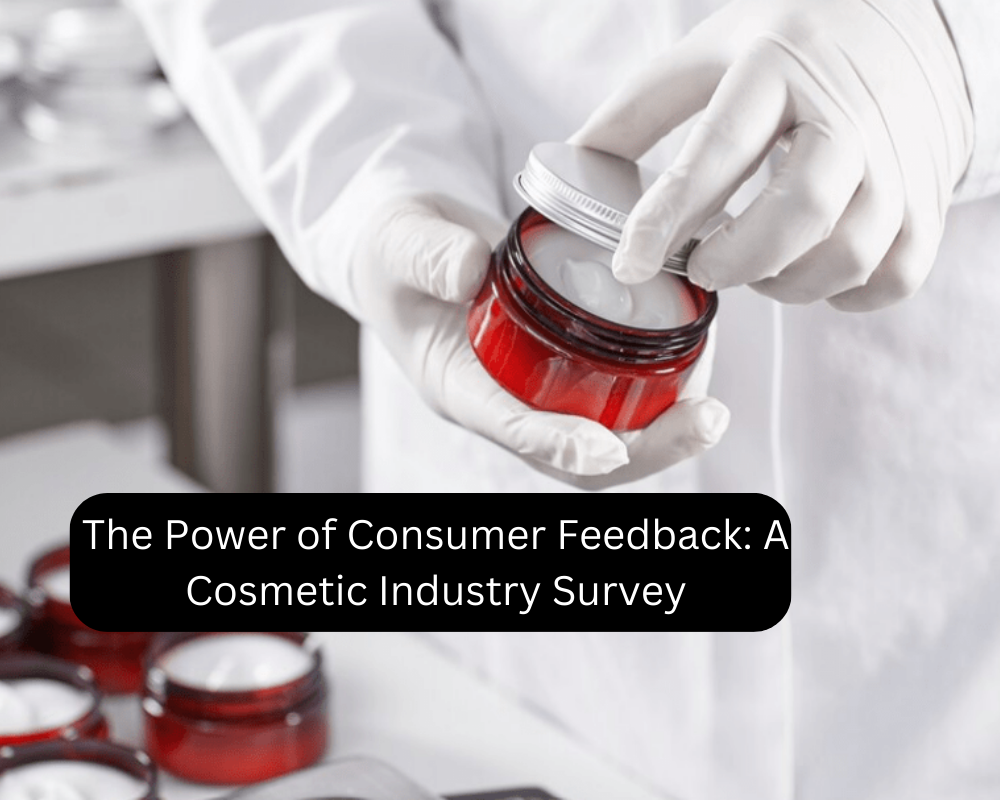Introduction
Ah, the thrilling realm of cosmetics! Consumer feedback reigns supreme, propelling product innovation and brand triumph. Keep those opinions coming! Knowing what consumers want is more than just a fad – it’s a must-have for cosmetic companies trying to stay on top in a cutthroat market.
This blog dives deep into the wild world of consumer feedback and its magical ability to transform everything. We’ll take you on a journey through a super-duper survey that reveals how it shapes product development, keeps customers coming back for more, and even changes the whole cosmetic industry. Get ready to be amazed!
Importance of Consumer Feedback in the Cosmetic Industry
Building Trust and Loyalty through Customer Engagement
Oh, you know, trust is like the foundation of a fabulous cosmetic brand. Gotta have that solid bedrock, baby! Oh, brands, you sly devils! By getting all up in your customers’ business and caring about what they think, you can win them over and make them your ride-or-die fans.
When customers feel like the stars of the show and get showered with appreciation, they’ll stick around like glue and make a brand shine bright for the long haul. Success, here we come!
The Influence of Online Reviews and Social Media
Ah, the era of social media, where consumers effortlessly spill the tea on their cosmetic encounters in the blink of an eye. Oh, the power of online reviews and social media! They have quite the knack for shaping how the public sees things.
Keeping an eye on these channels and firing back some witty responses gives brands the inside scoop, helping them level up and make changes based on good ol’ customer feedback.
Driving Innovation in the Cosmetic Sector
Consumer insights are like a magical fountain of inspiration for innovation. Cosmetic companies, being the savvy trendsetters they are, know that understanding what consumers want and need is the secret sauce to developing products that perfectly match market demands.
It’s all about giving the people what they crave! This super savvy consumer-centric approach not only nails expectations, but also catapults brands to the tippy top as industry leaders in innovation.
Conducting a Cosmetic Industry Survey
Designing Effective Survey Questions
Creating a survey that delivers juicy insights takes some serious question-posing skills. Finding the juicy bits and mixing up the numbers and feelings guarantees a full-on grasp of what consumers want and worry about.
Choosing the Right Survey Methods
It is critical to use proper survey methodologies to acquire trustworthy data. Cosmetic firms must use technology to acquire data efficiently, whether through online surveys, focus groups, or in-person interviews. The approach chosen should be appropriate for the target population and the type of information sought.

Analyzing and Interpreting Survey Results
Utilizing Data Analytics Tools for Meaningful Insights
Once the survey data has been gathered, it is critical to use data analytics techniques to extract useful insights. Analyzing customer preference patterns and trends gives a clear path for product development and marketing initiatives.
Incorporating Feedback into Product Development
Consumer input should be actively incorporated into product development plans rather than just collected. Cosmetic firms may improve existing goods or develop new ones that better meet consumer expectations by researching what works and what doesn’t.
Case Studies: Successful Implementation of Consumer Feedback
Examples of Cosmetic Brands Thriving Through Consumer-Centric Approaches
Several cosmetic businesses have flourished by focusing on the customer. For example, Feric Cosmetics aggressively seeks client input via surveys, which results in product improvements and increased customer happiness. Such instances can provide useful insights into effective techniques.
Learning from Specific Cases of Product Improvements
Examining particular situations where firms made adjustments in response to consumer input gives tangible proof of the effectiveness of such campaigns. From component reformulation to packaging updates, these modifications directly address customer complaints and lead to enhanced product quality.
The Impact of Responsive Brands on Market Share
Brands that aggressively respond to consumer input frequently gain market share. These businesses acquire a competitive advantage by matching their products with consumer expectations, gaining new consumers and maintaining existing ones.
Read: Makеup Trеnds That You Want to Apply in Any Sеason
Challenges and Considerations in Cosmetic Industry Surveys
Addressing Bias and Ensuring a Diverse Respondent Pool
One difficulty in conducting surveys is dealing with prejudice and ensuring a diverse respondent group. Random sampling and focused outreach assist in establishing a more representative sample, reducing bias in survey results.

Navigating the Balance Between Desires and Industry Constraints
Consumer demands may occasionally collide with industry restraints such as regulatory limits or economic concerns. To match customer expectations while complying with industry norms, this delicate balance needs strategic decision-making.
Managing Negative Feedback as an Opportunity for Improvement
Negative comments should be considered as a learning opportunity rather than a setback. Responding to feedback constructively and actively trying to resolve issues not only improves goods but also indicates a commitment to client pleasure.
The Evolution of Consumer Feedback in the Cosmetic Industry
The Historical Context of Consumer Feedback in Cosmetics
In the cosmetic sector, the technique of soliciting consumer input has changed over time. Understanding customer preferences has been an ongoing effort, from classic market research methodologies to current, technology-driven surveys.
Technological Advancements Shaping the Future of Feedback Collection
Technological advancements, such as artificial intelligence and machine learning, are set to transform feedback collecting. Automated analysis of massive volumes of customer data may deliver more nuanced and timely insights, helping firms to remain responsive to market changes.
Anticipated Trends in Consumer Feedback and Their Impact on the Industry
Consumer feedback patterns are predicted to grow more sophisticated in the future. Virtual reality experiences, bespoke surveys, and interactive feedback systems will most certainly define the future, offering a more immersive and individualized approach to understanding customer preferences.
Implementing Changes Based on Consumer Feedback
The Iterative Process of Product Refinement
It is an iterative procedure to implement modifications depending on user input. Collecting input regularly, assessing the results, and making required modifications ensures a continual cycle of progress. This dynamic strategy enables businesses to remain responsive to changing consumer demands.
Communicating Changes to Consumers and Building Transparency
When adopting changes based on customer input, open communication is essential. Brands should tell customers about the changes and explain how they handle their concerns. Transparency fosters trust and strengthens the brand-consumer connection.
Measuring the Success of Implemented Changes through Ongoing Feedback
Continuous feedback can be used to assess the success of improvements. Monitoring consumer responses, performing follow-up surveys, and tracking sales data are all useful measures for determining the impact of changes on customer happiness and brand loyalty.
The Consumer-Brand Relationship: Beyond Products
The Role of Communication and Responsiveness in Fostering Trust
A brand’s communication and response, in addition to its products, play an important part in creating trust. Brands that actively listen to and respond to consumer input build good perceptions, which contribute to long-term partnerships.

How Brand Values Aligning with Consumer Expectations Strengthen Loyalty
Consumers are increasingly looking for brands that share their beliefs. When a brand’s beliefs align with those of its customers, loyalty grows. Cosmetic firms that actively express shared values via their goods and actions build a stronger bond with their client base.
The Reciprocal Nature of the Consumer-Brand Relationship
Consumers and cosmetic brands have a mutually beneficial relationship. Brands respond to consumer input with changes and innovations. This continual conversation fosters a feeling of collaboration in which both sides contribute to the advancement of the cosmetic sector.
Conclusion
Finally, the importance of customer input in the beauty sector cannot be emphasized. Surveys provide a link between customers and brands, allowing for a continual flow of information that moves the industry forward. Cosmetic firms develop their goods and establish long-term connections with their clients by aggressively soliciting and incorporating consumer feedback through online form builders.
The future offers increasingly more sophisticated and individualized methods for understanding and matching customer expectations as technology advances. The advancement of the cosmetic business is inextricably linked to the vital input supplied by the very people it seeks to serve—consumers.
Author’s Bio:
Jennifer J. Stein working at RapidoReach, experienced digital marketer and content writer excelling in successful campaigns across various channels. Expertise in content, SEO, email, and social media marketing, driving conversions.

